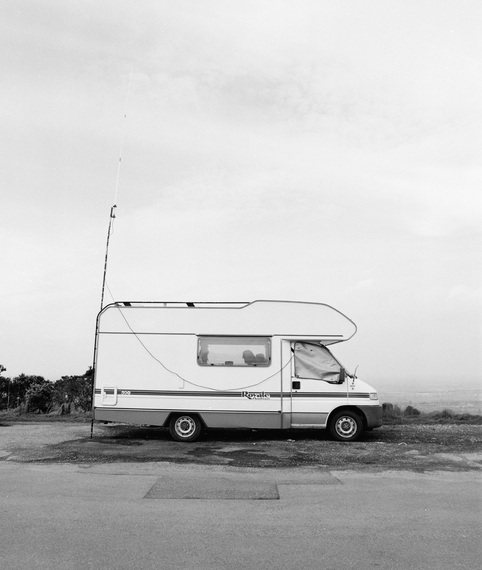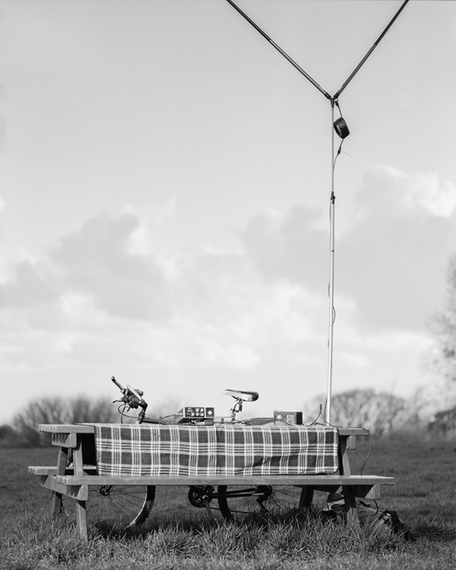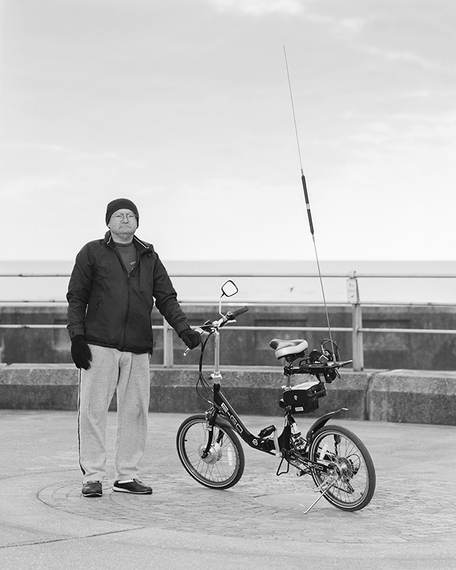Words and Photography by David Gregory.
I've recently re-awakened a love for the medium of black and white film that has for too long been neglected, and while I have been spending a great deal of time in the darkroom and having a great time, I was left pondering one particular question: To what commercial or professional application, if any, does this have? I have many replies to this question, but I'm aware that many of these are formed from a basis of bias rather than true objectivity, but I'm also aware that in itself, that is not necessarily a problem: Is work borne from a true intense interest, or passion for working in a medium, a bad thing? Well... Yes and no: Yes, because any work being done for the sake of using a process usually results in pretty boring work, and no because anything that builds enthusiasm is never a bad thing. I'm tempted to come down on the yes side however: As anyone who knows anything knows - good photography is about the subject, not really the photography. Jurgen Teller or Lee Friedlander, while being very different photographers, have one thing in common: They don't let a pre-occupation with perfect process get in the way of a great shot, and a great shot doesn't need it if it's a great subject. Try that the other way around and you're just one mediocre image in a billion in the Flickrverse. I digress however: If you are making work that has an involving, engaging subject that you are passionate about, and finding a medium that suits it, and also intrigues you, then you'll find levels of joy in your image making you can only find when that equation is balanced.
Anyone who knows me will raise an eyebrow at what they no doubt see as not only a road to Damascus conversion, but a full on, tyre smoking, Secret Service style J-turn upon that road, but the reality is, I've never been in love with the digital medium. I adopted to it early, became expert in its use, and realised that it was (and still is) the future of image making, but like many photographers my age, I learned the hard way - a baptism by stop-bath (you've simply not lived until you've barked your shins against the furniture, while stumbling blindly around a darkened room after inadvertently getting acetic acid in your eye).
So why am I talking about black and white film if the photographic processes play second fiddle to content? It's because I'm getting sick to death of digital image making, that's why. I realise that it will never go away, and still do (and will continue to do) a great deal of it, but something is missing, and only recently when I started to get back into the darkroom did I realise what it was.

from "11 Metres" - David Gregory
The Digital Malcontent
Digital has been heralded as the medium that truly democratised photography, and while this seems like a tired old saw, hackneyed to death, it is quite obviously true nonetheless. Photography is easier now than at any other time in its history; I see the evidence for this repeatedly in my teaching career. Students who can produce satisfactory, or even good work digitally, produce woeful work when using analogue media. Many would argue this is a good thing - that no technical process should get in the way of creativity and I would be the first to applaud such a sentiment; it should not. However, while fantastic, purposeful and engaging imagery can be produced with the digital camera (and the inescapable post-processes that are inevitably associated with it these days) there reaches a point in a photographer's life when the technical ease by which imagery is arrived at becomes quite frankly, boring. The predictability of being able to get exactly what I want, when I want, while advantageous in a commercial context, for many (myself included) dilutes the process; Reduces it even, because something genuinely is missing: The artefact - the thing itself. No one decries the ability to disseminate work freely, cheaply and easily; it's the lifeblood of the medium, but the plenitude of imagery already disseminated is staggering. It is estimated that there were one trillion digitised images taken in 2014, but where are they all? What is missing is the "thing" itself - the artefact. People like to hold things, and more importantly, own things. Is there truly satisfaction in downloading an album from iTunes? Does one feel pride of ownership? I know I don't. I can enjoy listening to it, but I have no tangible evidence that I own anything at all once my computer or device is switched off: Where is the pleasure one gets from the opening of the gatefold sleeve, or even removing the CD (itself a medium long since looking rather quaint) from the jewel case?
I feel there's a growing discontentment with all things digital on the increase, and not only from people "of a certain age", but amongst the millennials - a group so plugged in and networked one would assume anything other than total connectivity to a digital world would be anathema, but no: In 2015, vinyl record revenue surpassed that generated by online streaming services. Against this increasingly digitised world backdrop, that statistic has a certain resonance with me.
Similar trends can be seen in photography too. While the hipster crowd would inevitably be drawn to using obscure Soviet film cameras and anything seen to be out of favour, there are some precedents set already this year. Most notable was the decision by Reuters to only accept un-manipulated JPEG images, and no longer accept images processed from raw files. The abundance of digital imagery has coloured people's perception of imagery, and the very paradox of mixing digital imaging and journalism needs no explanation from me: As discussed in War is Beautiful by Shields and Hickey, the lavish aesthetic easily bestowed upon imagery via the digital processes so ubiquitous now are de-sensitising us: We need more and more impact, more aesthetically loaded imagery to tell our stories. It's an arms race by, and for the benefit of, the aesthetes.
Film has never really gone away - it's just withdrawn into its natural stomping grounds: Documentary, fine art etc. The costs, and inherent slowness of the medium has long since made it redundant in purely commercial contexts, but you don't have to look far to see that film never really went anywhere. It has suffered casualties in the period of transition: Vastly reduced types of E6 film available, almost no RA4 printing, and of course the much lamented loss of Kodachrome, but despite this, film is enjoying a quiet renaissance, and for good reason. People want their things back.
Less is More
So where does this leave me? Quite frankly, I think at a distinct advantage. While I can work with digital equipment and analogue with equal facility, the ability to work with film gives work a depth and quality still definable, even if the film is scanned. It's no coincidence that there is a robust industry in producing applications and plug-ins for Capture One, Lightroom and Photoshop that tries to (and fails to) replicate the look of film: It's desirable. People are forgetting how good the medium is. I once overheard a conversation between two young gentlemen in The Photographer's Gallery in London during an Edward Burtinsky exhibition. The two were speculating on whether the images were digital or not, and they came to the rather relieved conclusion that they must be, because film just doesn't look that good. They clearly couldn't reconcile what they were seeing with their perceived knowledge of film - that it was a flawed medium that lacked the fidelity of digital. In a way they were right: It is flawed in many ways, but those very qualities are what give it its strength - its uniqueness. It may be flawed, but so is digital, and a masterful print from a large format negative is something that needs to be seen to be fully appreciated. Likewise, a real print from a black and white negative, lovingly printed on unglazed, fibre based paper is something no digital process can get close to replicating.
As the backlash, and resistance against digital gains ground (while no one can ever expect it to be more than a niche popularity), those with the skills to wield it, and wield it well will be in a position to capitalise upon that increased awareness. While materiality will never overtake content and purpose as the arbiters of quality photography, the artefact will always be desirable. Even digital prints from scans of film retain the aesthetic of the donor medium. Whether it's working with colour film and scanning, or black and white darkroom work and silver gelatin prints, the niche arena of analogue photography will command respect and give work an extra dimension - a coda to the work: a final flourish of materiality that, all other things being equal, set it slightly above the omnipresent digital image. When part of the process that produces the final artefact requires years of practice, and hours to produce, its very scarcity is what gives it value. Digital to some extent, negates the need to print, and that's a shame, because the print is everything: There are millions of images of the Mona Lisa on the internet, but people still queue for ridiculous amounts of time to see the real thing in the Louvre.
Rare things are desirable: Less is more.


